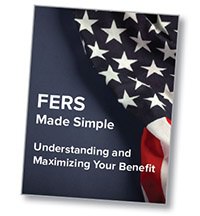Benefits of a TSP Rollover for Federal Retirees
December 2nd, 2020 | 3 min. read

After a long career, a federal worker may have a substantial amount of money saved in their Thrift Savings Plan (TSP) account. What you do with this money is an important decision because it will be a primary source of income for your retirement expenses.
At this stage of life, things like investment performance, excessive withdrawals and inefficient tax strategies can harm the likelihood your account lasts throughout your retirement. And you may not be able to simply work longer to make up for these shortfalls.
So, what should you do?
Upon retirement, there are several withdrawal options available to federal retirees in which to use TSP savings to help fund your desired lifestyle. You can keep the money in your TSP account and make partial withdrawals; take a full lump-sum payout, which is taxable and could result in a significant tax hit; or transfer the money into an individual retirement account (IRA), a process that is known as an IRA rollover, which is non-taxable.
In this blog we’ll explain why a TSP rollover into an IRA is generally the best option for federal retirees.
What is a TSP rollover?
To help you better understand, let’s first go over the definition of a TSP rollover. Simply, a TSP rollover is the transfer of funds from your TSP account to an IRA. This is considered a withdrawal. Unlike an actual withdrawal of cash, however, a TSP rollover is not taxed.
Usually any transfer of funds from an employer-sponsored retirement account to an IRA is a non-taxable event. But there’s room for error. It is not as simple as just wiring money from one account to another. Therefore, you should work with a financial adviser to ensure that you open the right IRA and avoid any unnecessary taxes.
Benefits of a TSP rollover
Although the TSP offers solid investment options to grow your assets while working, it may not provide the diversity, tax efficiency, investment selection and flexibility that can better provide a reliable and sustainable stream of income throughout your retirement.
Therefore, as you prepare for retirement, consider the benefits of a TSP rollover.
An IRA has the following advantages over your TSP account:
Greater investment diversification
In retirement, the amount of risk in your portfolio is a big concern. You don’t want to suffer a major decline in your portfolio when you’re using that money for your retirement needs.
One way to control risk is through diversification – owning different kinds of investments. Unfortunately, the TSP is not well suited for creating a well-diversified, balanced and risk-controlled portfolio. There are many asset classes unavailable, such as international bonds, emerging market stocks and bonds, and alternative investments. Together, these investment types can help your portfolio get through differing market and economic cycles.
Unlimited investment selection
With that said, IRAs offer retirement investors access to almost any investment available to help meet specific income needs and future goals.
Greater flexibility
An IRA gives you the flexibility to purchase or sell investments as economic conditions or your needs change. Sometimes new investment opportunities or life events, such as a death of a spouse, will necessitate adjusting your investments to better align with your new needs or goals.
Easier access to your assets
With an IRA you can quickly raise and access cash for expenses, especially for unexpected costs such as medical emergencies or home repairs. Of course, this ability can also be a drawback to those who struggle to control their spending.
More low-cost options
Although the TSP is low cost, you can find comparable or cheaper investments in an IRA that offer far greater selection, flexibility and customization. The lower your investment costs, the more of your return you keep.
Active management
Investments in an IRA allow for active management of the portfolio. That means instead of holding funds that simply try to match the market, such as those in the TSP, investments are purchased or sold based on economic fundamentals in an attempt to hold investments that outperform the market.
As you start considering what to do with your TSP for retirement, it is important to carefully choose your withdrawal options as well as your withdrawal amounts. Excessive withdrawals can reduce the likelihood of a successful retirement. By the same token, overly frugal withdrawals could diminish your quality of life in retirement.
This aspect of financial planning should be done in conjunction with all of your available assets, including your spouse’s estimated retirement income if you’re married. Taking this view will help guide you through decisions that impact your retirement income, your taxes and your ability to pass assets on to your loved ones.
Learn more about government retirement benefits, including the FERS basic benefit, the Thrift Savings Plan and other retirement planning steps, by downloading our free, easy-to-understand guidebook, FERS Made Simple: Understanding and Maximizing Your Benefit.
Advance Capital Management is a fee-only RIA serving clients across the country. The Advance Capital Team includes financial advisers, investment managers, client service professionals and more -- all dedicated to helping people pursue their financial goals.


